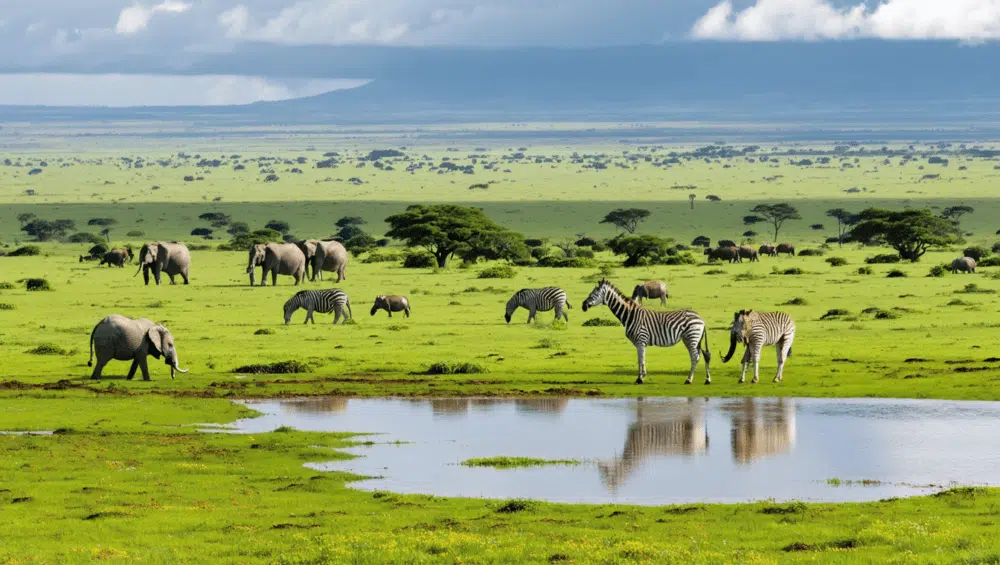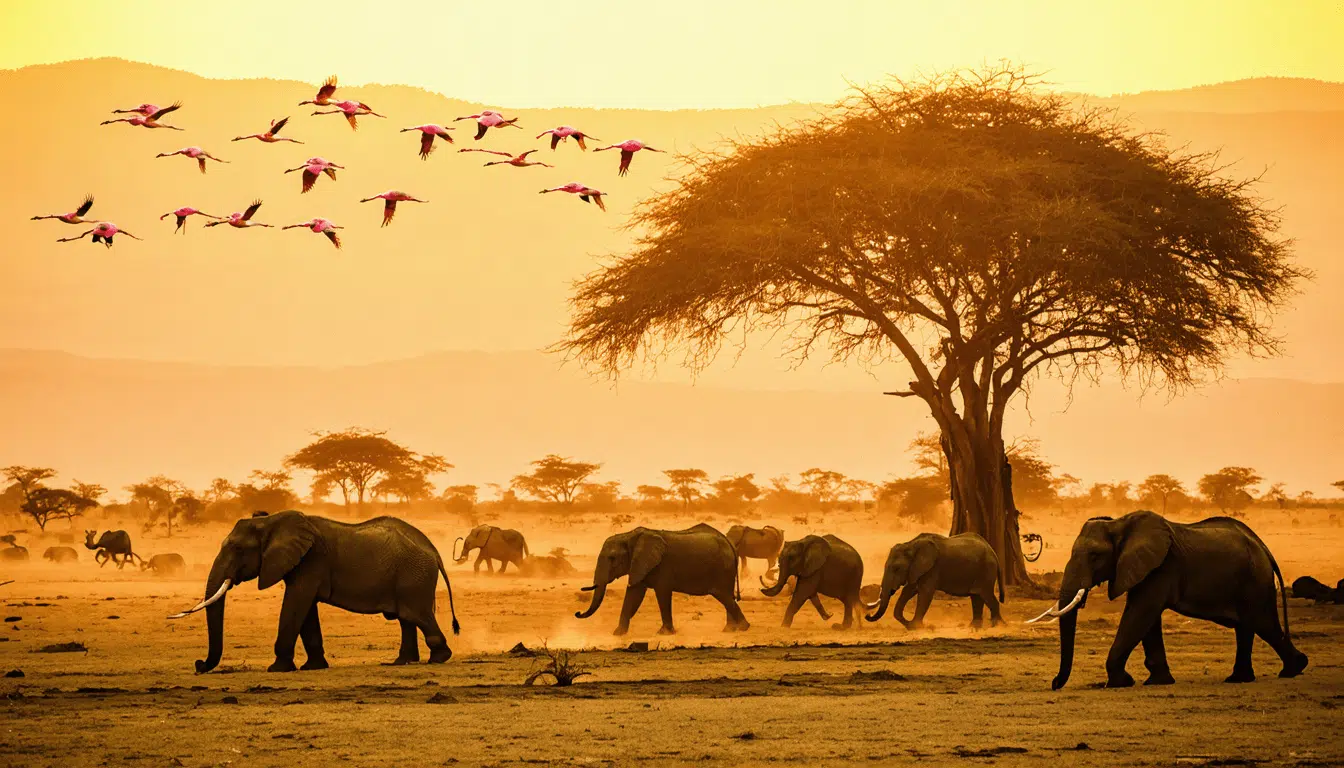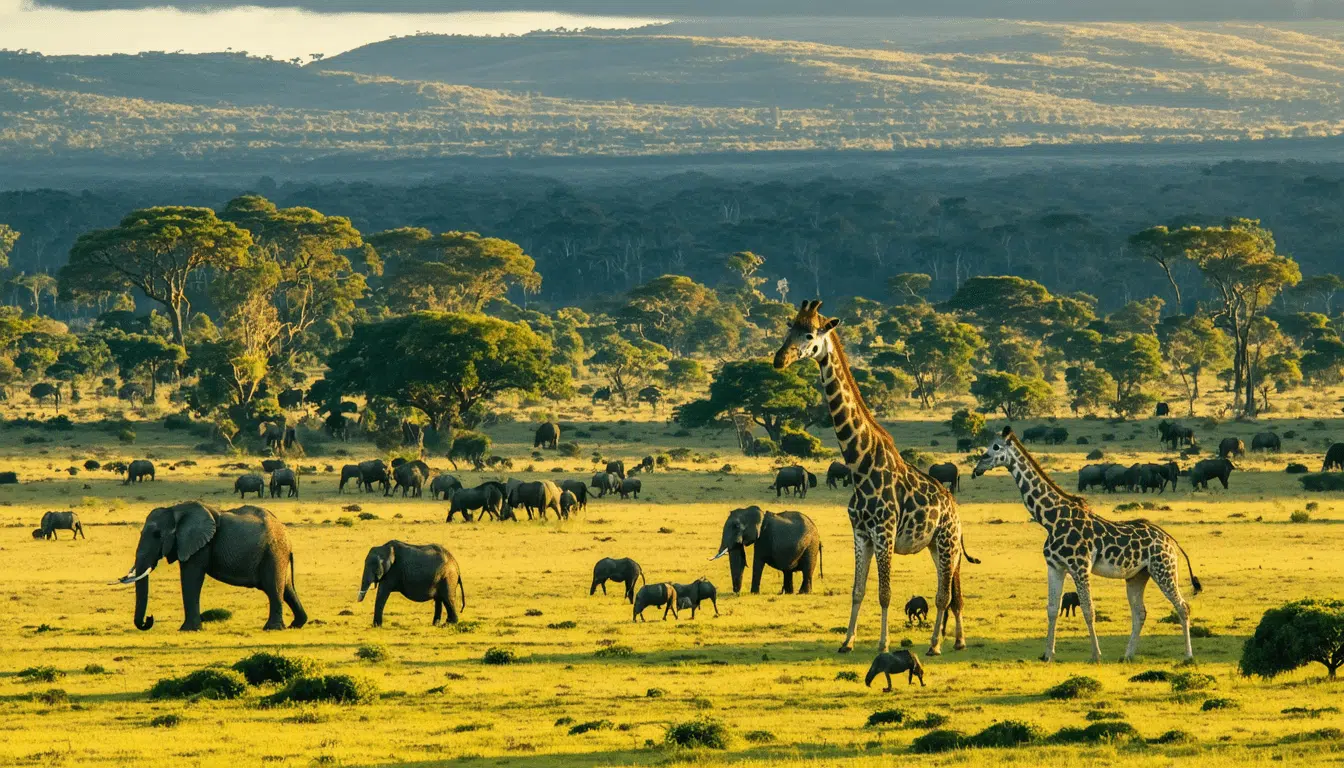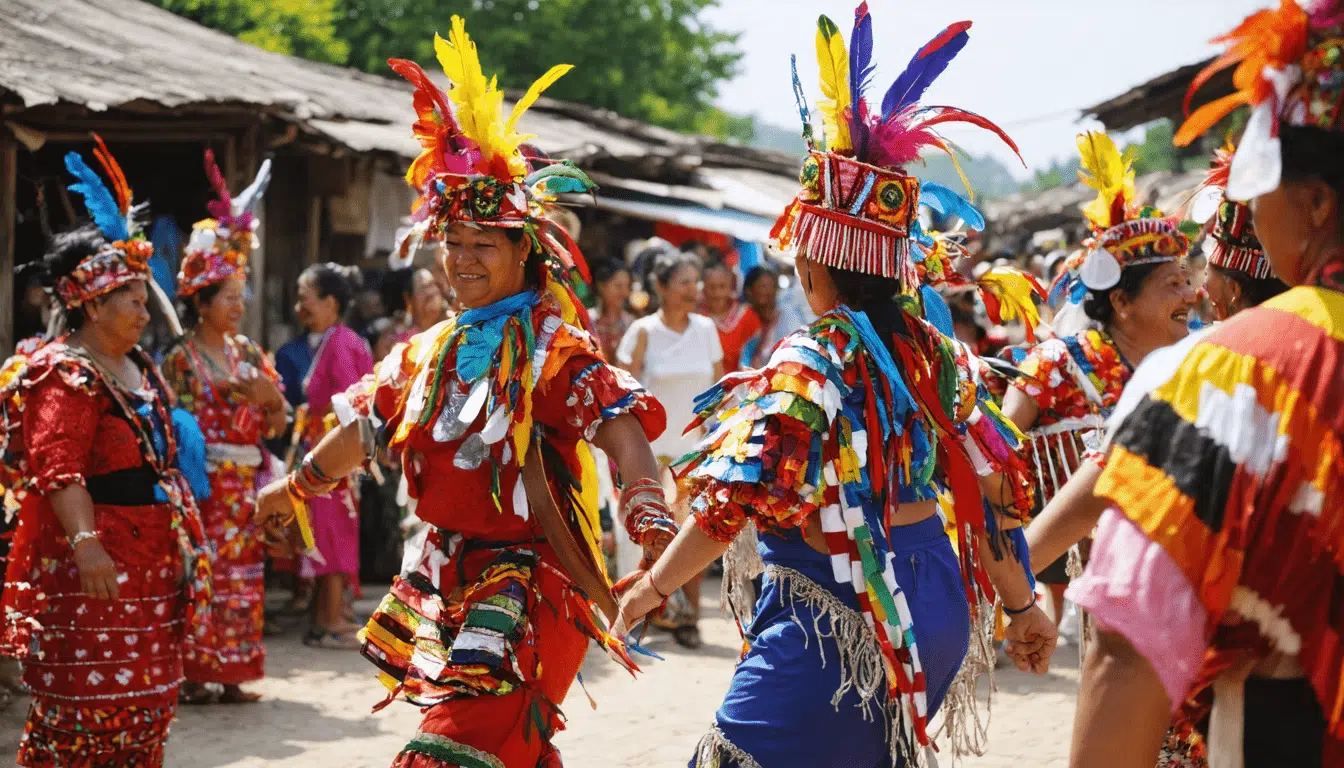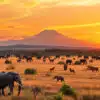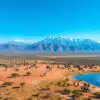Why Travel to Kenya in the Green Season?
When I first heard about Kenya’s so-called green season, I was, I’ll admit, a bit skeptical. Africa is famous for its savannas and sun-drenched landscapes, but lush green fields and occasional rain showers? Not exactly what you picture when you think of safari destinations. Yet, January to March, Kenya’s green season, comes with its own brand of magic that even the sunniest dry season can’t match.
Kenya’s climate isn’t shy in its extremes. The wet season, also known as the green season, runs from January to March and then again in November to December. But let’s focus on that early-year window, shall we? As the rains breathe life into the landscapes, transforming them into a scene straight out of a movie, the once dusty terrains turn into vibrant, lush panoramas that are simply begging to be explored.
So, why is this season optimal for travel? For starters, the rains tend to be sporadic and often occur in the late afternoons, leaving plenty of time for sunny adventures. This translates into fewer tourists, meaning you can savor the beauty and tranquility of the environment without elbowing fellow travelers out of the way for photos. It’s like having the entire country roll out the red carpet just for you, no paparazzi in sight!
But it doesn’t stop there. The green season is a prime time for unique wildlife experiences. Think about it—have you ever watched a lion wade through the tall grass with the intent focus of a hunter knowing dinner is almost served? Or witnessed the miracle of life as newborn antelopes and wildebeests take their cautious first steps under their mothers’ watchful eyes? January to March is when these wonders unfold right before your eyes, and the perfect time to embark on a safari. The lush, green landscape provides not only a stunning backdrop for these scenes but a chance for you to witness life in the wild in its most intimate form.
The benefits of traveling during this quieter, rain-kissed season extend far beyond just witnessing wildlife. It’s about stepping into a world less crowded, experiencing culture in its purest form, and seeing Kenya not just as a destination, but as a living, breathing entity bursting with color and life. So, does the idea of exploring Kenya in the green season make you want to pack your bags, too?
Introduction to Kenya’s Green Season (January to March)
Ah, Kenya—a land of diverse landscapes, vibrant cultures, and, of course, awe-inspiring wildlife. But have you ever thought about visiting during its Green Season? Now, you might be scratching your head thinking, Green Season? What’s that? Allow me to take you through this captivating journey. During the months of January through March, Kenya enters what’s fondly known as the Green Season. But is it just about more rain? Spoiler alert—it’s so much more.
Kenya’s Climate and the Green Season
Kenya’s climate can be as unpredictable and exciting as the latest mystery novel. With its vast landscapes and varied geography, you’d be running around guessing the weather. But fret not—the Green Season primarily means a period when the landscapes burst into lush, vibrant life. It’s like watching a film in vibrant 4K after having only ever seen it in black-and-white.
Though termed the ‘rainy season,’ don’t let that deter you. January to March usually experiences short, refreshing showers rather than constant downpours. It’s the kind of rain that taps you on the shoulder to remind you of the beauty that follows—a world pulsating with green vitality. So why is the Green Season the best-kept secret for Kenyan travelers? Let’s unpack that.
Why Opt for the Green Season?
Imagine having an elephant parade all to yourself, or witnessing the delicate dance of a Thompson’s gazelle in the cool morning mist. During the Green Season, the savannahs come alive with food plenty, making wildlife sprightly and less shy. Fewer tourists mean less crowded parks, so you might just feel like the king or queen of the jungle.
Plus, the Green Season offers friendlier prices. If the thought of spending less on accommodations and having better deals on safari sounds appealing—and let’s be honest, who doesn’t love a good bargain?—then it’s a no-brainer. Besides, you’ll have more time and space to strike up adventurous conversations with fellow travelers or locals you meet along the way.
Unique Experiences and Opportunities
Let’s dive deeper into those unique experiences that make the Green Season so special. First and foremost, it’s breeding season for numerous wildlife species. Picture this: you’re on a safari, and suddenly, your guide points out a lioness and her cubs playfully sliding down a sunlit slope. It’s a scene that’s not only rare but utterly heart-melting.
The birdwatchers among us will be in heaven as well, as migratory birds from Europe and other parts of the world take up residence. Think avian beauty contests right above your head! The landscapes transform into a painter’s palette of green and gold—a dream come true for nature photographers seeking the perfect shot. Can you hear your camera shutter clicking already?
But perhaps one of my favorite experiences? The cultural encounters you can only have during this less-trodden path of a season. The intimate interactions with local communities give you a deeper understanding of the true essence of Kenya. Imagine sitting under a broad Acacia tree, sharing stories with a group of Maasai elders, learning about their way of life—a privilege you could more comfortably have during this period.
Intrigued yet? Kenya, in its Green Season, offers a realm of exploration filled with lush imagery, vibrant wildlife, and invaluable cultural connections, ensuring your journey is one for the books—or perhaps, one for the blogs. So, are you ready to swap stories of unpredictable weather under the Kenyan sun and relish these unforgettable adventures?
Wildlife Viewing and Unique Safaris
Picture this: You’re in the middle of a vast, green expanse. The smell of rain lingers in the air, and the horizon is dotted with silhouettes of majestic elephants and towering giraffes. That’s Kenya for you during the Green Season. Now, if you’re thinking about a safari, January to March might just be the best-kept secret any wildlife enthusiast would dream to discover. Let me take you through why the Green Season cranks up the wildlife experience like no other.
The Lush Landscape Advantage
Once you set foot on Kenyan soil during these months, you can’t help but notice how the landscape transforms. The rains breathe life into the plains, turning them into a vibrant canvas of green. It’s like nature took a fresh paintbrush and added pops of color. This lush landscape serves a dual purpose—providing robust habitats for the wildlife and creating stunning backdrops for your safari adventures. Have you ever imagined watching a herd of elephants against the backdrop of emerald hills? It’s nothing short of mesmerizing.
Fewer Crowds, More Magic
Let’s be real for a moment—nobody likes jostling for the best view or getting your perfect photo bombed by another group vying for the same shot. One of the biggest perks of traveling during the Green Season is the delightful absence of throngs of tourists. This tranquility offers a more personal and intimate experience. It’s just you, your camera, and the awe-inspiring wildlife. In many parks, the vehicles are fewer, giving you the liberty to linger and savor those magical moments, whether it’s lion cubs playing or a leopard lounging in a tree.
Where the Magic Happens: Parks and Reserves
Now, you might be wondering where to go to catch these breathtaking sights. Let’s talk specifics. Maasai Mara, for instance, is a spectacle of nature’s grandeur. Known for its sprawling grasslands, this reserve hosts a thriving ecosystem. During these months, you can catch the start of the Great Migration, with thousands of wildebeests and zebras arriving to feast on the lush grass. It’s also the birthing season for many animals—have you ever seen a wobbly, newly-born giraffe begin its first steps? I promise, it’s a sight that stays with you forever.
Then there’s Amboseli National Park, famed for its large tusked elephants. The rains clear the skies, offering picture-perfect views of Mount Kilimanjaro’s snow-capped peaks as a backdrop. It’s an Instagram post waiting to happen! Let’s not forget about the lesser-known treasures like Samburu National Reserve. Here, you’ll find species you won’t see anywhere else—the Grevy’s zebra, Somali ostrich, and the long-necked gerenuk. It’s like having a front-row seat to an exclusive show.
The Birthing Miracle
But wait, there’s more! Another magical advantage of visiting during this season is witnessing the miracle of new life. January to March is prime birthing time. Plains full of adorable baby animals accompany their mothers. You might spot a lioness with her curious cubs or hear the exuberant chatter of young cheetahs testing their speed for the first time. It’s not just a visual feast, but an emotional one too—how can you not feel a surge of joy seeing baby wildebeests finding their footing?
And there you have it—a glimpse into why Kenya’s Green Season is a wildlife wonderland. It’s more than just a trip; it’s an opportunity to be part of nature’s dynamic cycle. Whether you’re a seasoned safari-goer or a first-timer, this magical season offers a fresh perspective and unmatched beauty. As you contemplate your next adventure, perhaps it’s time to let Kenya’s vibrant green call out to your explorer’s heart.
Scenic Beauty and Natural Attractions
The Lush Transformation of Kenya’s Landscape
Ever seen a desert bloom? If not, visiting Kenya during the green season from January to March might just be your chance. You know how sometimes after a heavy rain, everything seems to wake up from a long nap? That’s exactly what happens here. Imagine the endless stretches of land turning a lively shade of green, predictably stunning every time the rains grace the landscape. The parched earth drinks greedily, and in turn, bursts forth with life. Plants bloom vigorously, painting the land with bright colors and fragrant scents.
I remember my trip to Nairobi National Park one February. The starkness that often defines the dry season was replaced by a vivid vitality I could hardly believe. Sounds of chirping birds were everywhere, and the air was alive with the buzzing of busy insects. Even the zebras seemed to rejoice with their clean, crisp coats against the freshly green backdrop. If you’re someone who appreciates natural beauty, then trust me—Kenya’s green season is an unforgettable experience that will fill your camera with vibrant memories.
Natural Wonders: The Great Rift Valley and Mount Kenya
Now, let’s talk about some of Kenya’s extraordinary natural attractions during this verdant time. First on the list: The Great Rift Valley. Envision massive escarpments dramatically running from the north to south of Kenya. Typically breathtaking, this geological marvel takes on an entirely different aura during the green season—swollen rivers and fuller lakes reflect the lush greenery, making it a photographer’s dream.
And then there’s Mount Kenya, Africa’s second-highest peak. During the green season, the lower slopes of the mountain become a rich, verdant playground for flora and fauna. The thickening vegetation and the crystalline air create a perfect setting for those epic Instagram-worthy shots or for simply treating yourself to the essence of tranquility. Have you ever considered hiking in the rain-sprinkled coolness? It’s enchanting!
Photography Tips for Capturing Kenya’s Vibrant Green Season
Speaking of Instagram, if you’re anything like me—a little obsessed with getting that perfect travel shot—here are some tips to make the most of your time in Kenya during this season. First, make sure you wake up early. The early morning light softens the transitions between the rainy skies and green landscapes, and trust me, this hour has its own kind of magic.
Use the vibrant greenery as your backdrop, and don’t be afraid to experiment with angles. Get low to capture that dew-drenched grass or go high for sweeping, panoramic views of fresh vegetation stretching to the horizon. And here’s a secret: animals like elephants and antelope often have playful young during this time, providing a goldmine of photo opportunities.
Remember to pack weather-resistant gear, because while the rains usher in all this beauty, they can sweep in rather suddenly. Lastly, never underestimate the power of patience. Sometimes it’s sitting quietly, waiting for that one moment where nature unveils her beauty right before your eyes—a spontaneous rainbow, the perfect reflection in a rain-fed pool, or an animal interacting in an authentic, unguarded manner. Are your camera batteries charged yet?
In summary, Kenya during the green season transforms into a realm of vibrant life and natural allure. Every corner of the landscape brims with color and charm, turning every walk or drive into an adventure. Whether you’re capturing the lush beauty with your camera, in awe of the stunning contrasts, or just taking in the sheer abundance of nature, visiting Kenya during this period will undoubtedly etch itself in your memories.
Cultural Experiences and Local Interactions
Have you ever thought about the kind of cultural immersion you can have during Kenya’s green season? While most people flock to Kenya for the wildlife and stunning landscapes, there’s another treasure trove hidden within the heart of this vibrant country: its people and culture. The green season, stretching from January to March, is not just about nature flourishing but also about rich cultural experiences waiting for the inquisitive traveler.
Diving into Kenya’s Festivals and Markets
Picture this: You’re wandering through a bustling market stall, the aroma of freshly roasted coffee mingling with the sweet scent of mangos. The colors of kitenge fabrics flutter in the gentle breeze as vendors call out greetings in Swahili, eager to showcase their merchandise. This is the authentic Kenyan market experience, and during the green season, it’s a less crowded but incredibly vibrant affair.
Take the Maasai Mara Cultural Festival, for instance; held in January, it’s a perfect window into the lives of the Maasai people. The festival offers a unique opportunity to witness traditional Maasai dances, music, and crafts. Hey, ever tried Maasai cuisine? This is your chance! The green season makes attending such festivities feel more intimate, offering deeper connections with the local communities.
Traditional Events: A Quiet Season with a Loud Heartbeat
Kenya doesn’t quieten down when the rains come; instead, it comes alive with events that are often overshadowed in the peak tourist months. Among these is the annual Lake Turkana Festival. Held in March, it’s a spectacular showcase of cultural diversity. Here, you can meet 14 different ethnic communities showcasing their rich cultural heritages through performances and traditional attire.
Have you ever found yourself clapping along with the beat of an African drum? At events like these, you can find yourself not just observing but fully participating in the joyous celebrations. It’s as if the green season breathes a fresh gust of life into every ceremony, every song, and every dance you encounter.
Engaging with Kenyan Culture, Cuisine, and Arts
The quieter tourist season from January to March invites travelers to step softly into the rhythm of Kenyan life. This is the perfect time to get hands-on with cultural activities that might otherwise be overwhelmed with tourists. Ever wanted to learn to cook a traditional Kenyan dish? Consider joining a local cooking class where you can whip up chapati or the famous nyamachoma while hearing tales from the chef about the dish’s origins.
Art lovers will find a thriving scene in cities like Nairobi, where galleries and art spaces such as the Nairobi National Museum and the Kuona Artists’ Collective offer insights into Kenya’s burgeoning art landscape. Local artists are often more accessible during this less hectic time and eager to share their inspirations and stories behind their work.
Why the Green Season? Local Insights and a Personal Connection
You might be wondering, “Why choose the green season for these experiences?” The answer lies in the opportunity for genuine human connections. As a smaller crowd roams these lands, you find yourself having a casual chat with a market vendor or a heartfelt conversation with a Maasai elder. These are the moments of travel magic that many seek but few find when the tourist numbers swell.
The green season provides a relaxed atmosphere where both travelers and locals are more open to interaction. It’s not just about seeing Kenya; it’s about feeling it, living it, and taking home stories that resonate more than any photograph ever could.
Have you ever come back from a trip with a meaningful connection to someone you met along the way? If not, Kenya’s green season might just be your invitation for a more intimate and culturally rich adventure, one where each interaction leaves an indelible mark on your heart and adds a layer of depth to your travel tales.
Conclusion
So, there you have it—why the Green Season in Kenya, from January to March, is truly an underrated gem. I know, you might be thinking, Rain? On my vacation? But let me ask you this: have you ever stumbled upon a hidden treasure when everyone else was looking in the wrong place? That’s what traveling to Kenya during this time feels like—an exclusive peek into a vibrant world bursting to life.
Imagine watching wildlife migrations with just the sound of nature as your background music, instead of a crowded orchestra of tourists. The lush, green landscapes create the perfect setting not just for animal births, but also for the photograph or two that will have your friends swearing it’s magazine-worthy. And think of the incredible cultural experiences you can have without elbowing your way through throngs of visitors. From local festivals to quiet markets bustling with authentic Kenyan vibes, you’re not just observing; you’re participating.
Maybe you’re like I was, hesitant about deviating from the typical peak travel periods. But once you experience those jaw-dropping landscapes, the intimate safaris, and the heartwarming community interactions, you’ll see the Green Season in a whole new light. It’s like Kenya rolls out a carpet that might not be red but is lush and splendidly green, just for you.
So, if you’re looking for a travel experience that’s off the beaten path but right on the mark, think about penciling in Kenya for the Green Season. Trust me, the only thing better than having a place to yourself is sharing it with the welcoming spirit of its people. I mean, who doesn’t love a little exclusive magic sprinkled over their adventures?

